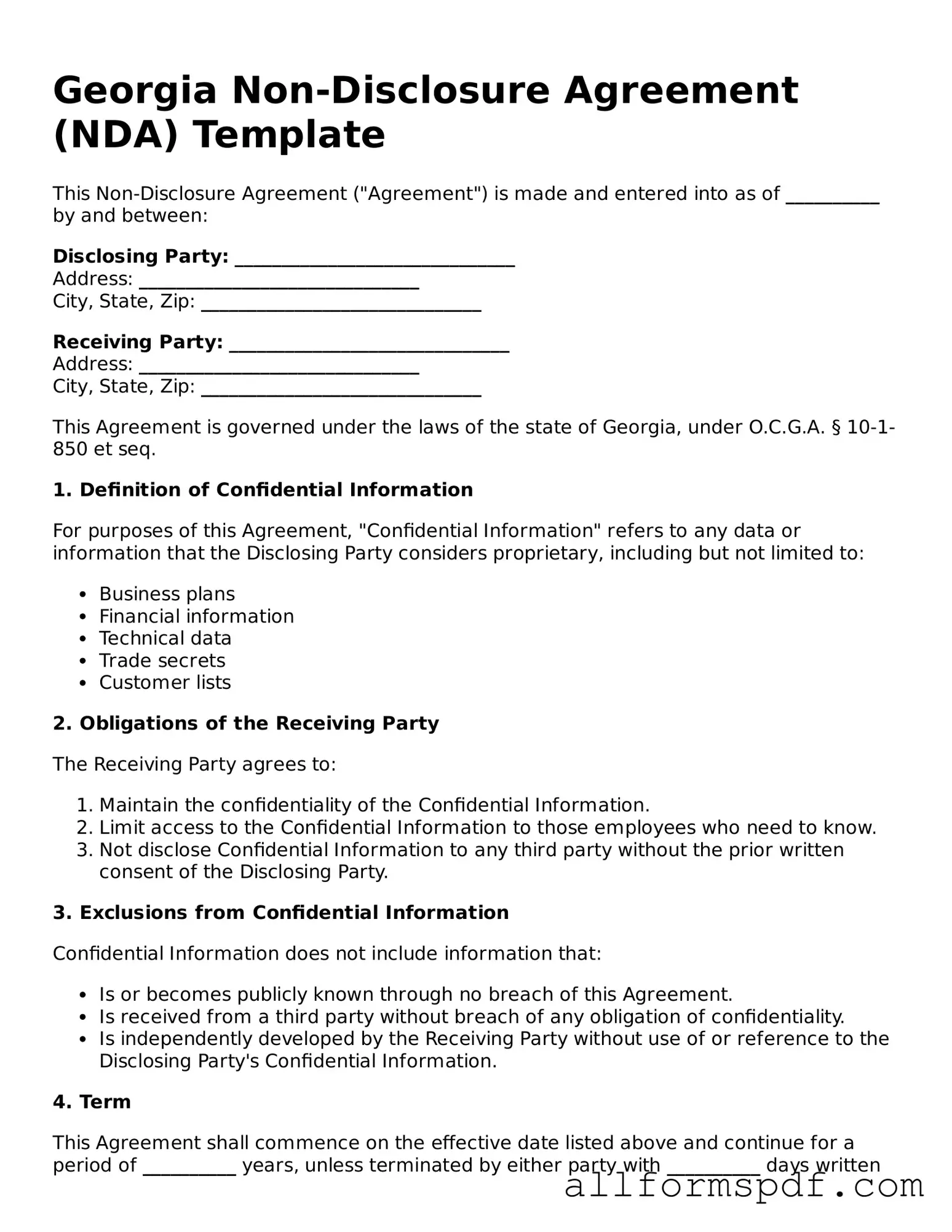Filling out a Georgia Non-disclosure Agreement (NDA) can seem straightforward, but many individuals make common mistakes that can lead to complications later on. One frequent error is failing to define the confidential information clearly. Without a precise definition, it becomes challenging to enforce the NDA if a dispute arises. Parties may have different interpretations of what constitutes confidential information, which can lead to misunderstandings.
Another mistake is not specifying the duration of the confidentiality obligation. An NDA should state how long the information will remain confidential. If this is left vague or omitted entirely, the agreement may not hold up in court. It’s essential to set a clear timeframe to protect sensitive information effectively.
People often overlook the importance of including all parties involved in the agreement. If one party is missing from the NDA, it can create loopholes that allow for the unauthorized sharing of information. Every individual or entity that will have access to the confidential information must be named to ensure comprehensive coverage.
Additionally, many fail to consider the governing law clause. An NDA should specify which state’s laws will govern the agreement. Without this clause, enforcing the NDA can become complicated, especially if a dispute arises in a different jurisdiction. Clear legal parameters help streamline any potential legal processes.
Lastly, individuals frequently neglect to seek legal advice before finalizing the NDA. While it may seem unnecessary, consulting with a legal professional can help identify potential pitfalls and ensure that the agreement is enforceable. This step can save time and resources in the long run, preventing costly mistakes that could have been avoided.
